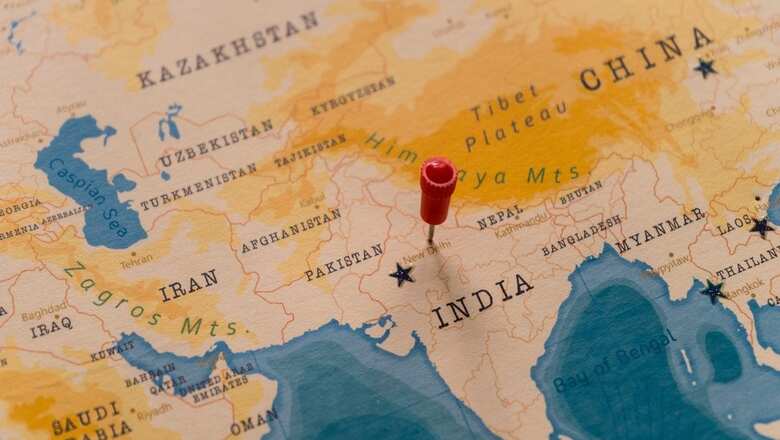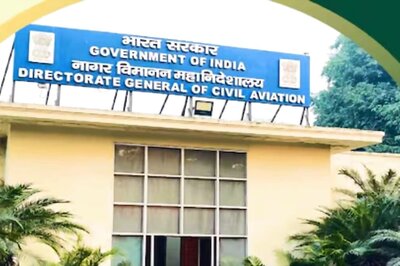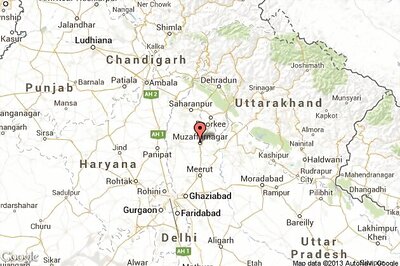
views
Genesis
There has been a paradigm shift in the definition of security for all the nations in the world. Initially conceived only as defence from military attacks, it moved to the protection of its citizenry as well, in multiple domains. At present, it encompasses the entire canvas of the national interests related to itself and its citizens, both in the present as well as future timeline. Due to such a wide canvas of emerging security concepts, it has become very important to address these challenges more meaningfully. These challenges emerge from friends as well as foes. While friends may be collecting certain data for their future utilisation, foes are working both in the present as well as the future, utilising covert and overt means.
Coming closer home to the Indian context, the security challenges are galore but those emanating from its neighbourhood deserve special attention as they have a profound impact on national security. Since the expanse of national security is too wide, only some of the important aspects will be highlighted as they have direct as well as indirect impacts on the national contours of security.
China
China poses the most potent security challenge for the country and that too in multiple domains. Some of the important aspects are as under:
Territorial Challenges
- There is an ongoing territorial dispute wherein large tracts of Indian territory of Aksai Chin are under adverse possession of China besides ongoing ingress in other areas as well extending from Ladakh to HP, UK, Sikkim and Arunachal Pradesh.
- Despite the 1962 war and skirmishes of 1967, 1987 and 2017, China continues to be aggressive on the border issue and on the Line of Actual Control (LAC) issue. Despite multiple agreements to maintain peace and tranquillity, it has disregarded all the bilateral agreements and international norms wherein it has made large-scale transgressions across multiple points on the LAC in Eastern Ladakh since April-May 2020, the transgressions continuing for more than three years.
- It has adopted its Land Border Law with effect from January 1, 2022, which has transformed the issue of territorial dispute into a sovereignty dispute, restricting the scope of future negotiations.
- It has established more than 600 Xiaokang villages close to the LAC to reassert its claim wherein it is trying to focus on the negotiation of LAC, keeping the border negotiation almost dead for times to come.
- It is naming multiple places in Arunachal Pradesh to reassert its claims besides publishing incorrect maps.
- It is giving stapled visas to residents of Arunachal Pradesh irrespective of the purpose of the visit to China and in the process, undermining Indian national authority.
- It is raising objections to the visit of the President, PM and other senior dignitaries to the state of Arunachal Pradesh.
- While China had initially focussed on strategic and operational aspects of warfighting, it is now focusing on the tactical aspects as well as readying itself for any future conflict whose timing it can decide as force capability is in its favour.
- Having adopted ‘No First Use’ of nuclear weapons by both India and China, China has gained the edge wherein it can use the favourable conventional force asymmetry of the conventional forces currently in its favour.
- China has been actively working with other neighbours of India to drift them away from India and has largely succeeded in this effort.
- In addition to land threat, air & naval threat also looms large.
Economic Challenges
- After the detente of post 1962 conflict between India and China, China used Indian markets to boost its trade which continues heavily in its favour to date.
- It made India so dependent on itself post-1990 that the Indian manufacturing sector suffered in a big way. Despite Covid-19 and its incursions on LAC, India’s effort to reduce its economic dependence on China did not meet with much success. In fact, the trade values exceeded the previous levels and that too in favour of China. India needs to give additional impetus to domestic manufacturing combined with an alternate logistic supply chain. It’s a time-consuming process but has to be done to address this economic challenge for its misadventures.
Water Challenges
- Most of the Indian rivers emanate from Chinese-occupied Tibet/other parts of China.
- China has been constructing dams to reduce the water flow which is critical to India being a low riparian state.
- There are no formal agreements about sharing the river water coming from China unlike the Indus Water Treaty existing between India and Pakistan.
- India needs to work towards a formal agreement with China for river water sharing lest it suffers due to Chinese adversarial actions.
- In addition, India needs to resolve its water-related disputes with all other neighbours including Bangladesh.
- The country has to work hard for the restoration of rivers and other natural water resources while linking all Indian rivers is a must.
There are many more challenges from China – space, cyber, oceanic and collusivity with Pakistan being some of them. India needs to carry out a reappraisal of all the challenges in the context of China as it requires a focused approach to tackle them.
Pakistan
Pakistan has been a difficult neighbour since its inception. In addition to its non-secular fabric, the British Independence Act of 1947 granting independence to India and Pakistan allowing the option for princely states to join India or Pakistan created the majority of the problems. Hurriedly drawn border line known as the Radcliffe Line resulted in large-scale migrations of native populations, miseries and deaths scars of which continue till date.
Despite four wars including 1947-48, 1965, 1971 and 1999 wherein it was dismembered in 1971 by Indian defence forces to create Bangladesh from erstwhile East Pakistan as an independent nation, its animosity with India continues. Though parity with India does not exist in any domain, Pakistan’s mental orientation continued towards this more so as we took a lot of time to come out of our Pakistan fixation. Some of the major challenges from Pakistan are as under:
- It continues to occupy close to 40 per cent territory of the Indian state of J&K to date.
- Due to the CFL after the 1947-48 war and LOC after the 1971 war, it claims Siachen glacier illegally as demarcation was terminated at NJ 9842 at both stages of the demarcation. After India occupied the Siachen glacier in 1984, Pakistan has made numerous attempts to dislodge Indians though it has not met with success so far.
- It handed over Shaksgam Valley to China illegally in 1963 to permit connectivity through the Karakoram pass.
- It has now allowed the construction of CPEC through the occupied territory of the Indian state of Jammu and Kashmir thus bringing China into the India-Pakistan dispute.
- It has been conducting proxy wars not only in J&K but attempting to cause disturbances in other states of India with a special focus on Punjab.
- Pakistan has also been supplying drugs as well as fake currency including the use of drones for the purpose.
- India has to call Pakistan’s nuclear bluff for once. The current turmoil in Pakistan on multiple fronts, including the economic crisis, presents an excellent opportunity for India to handle the Pakistani challenges more effectively.
Nepal
Nepal has been India’s trusted friend for a long time. It is a country which allows borderless travel from both sides besides Nepalese youth being recruited in the Indian Army. Of late, there have been emerging challenges from Nepal as well, some of which are as under:
- Chinese inroads in Nepal have increased substantially.
- A bilateral border agreement has been made between Nepal and China to identify a separate Tri junction from the one recognised by India.
- It has raised the Kala Pani territorial dispute claiming large Indian territories and has gone ahead even with the publication of maps probably at the behest of China.
- Increased connectivity is being sought with China to reduce Indian dependence.
- Agnipath, a revised recruitment scheme for the defence forces, which allows only 25 per cent of candidates to be retained after four years of service, has resulted in the Nepal government not allowing its youth to join the Indian Army, thus disrupting a very important chord in the bilateral relationship.
- Deliberate political and diplomatic handling is needed to arrest the Nepalese drift in the Chinese lap. A fresh friendship treaty could be the way out.
Bhutan
This country has been a trusted friend whose security responsibility is with India. India stood its ground due to this in Doklam in 2017. There have been attitudinal changes in Bhutan after the democratic form of government came to power, some of the challenges are as under:
- China is trying to establish diplomatic relations with Bhutan which will drift the nation away from India.
- The ongoing border dispute settlement discussion, if it results in giving away the Western part of Bhutan in the Chumbi valley to China, will be detrimental to the security interest of India due to the increased threat to its Siliguri corridor.
- Inroads into Bhutan by China will not only affect the Siliguri corridor but will also result in an enhanced threat to the Tawang sector in Arunachal Pradesh.
- India needs to handle Bhutan deftly to safeguard its national interests now as well as for times to come. A fresh treaty could be the way out.
Sri Lanka
Despite an all-time and all-out effort to support Sri Lanka, India is always seen as an untrusted friend. India even went out of its way to support this island nation in the current economic crisis when it was debt-trapped by China and had almost collapsed. The country has fallen into the Chinese hands in a big way. China, which is the number one debt contributor, has got major projects including the Colombo City project and Hambantota Port project allowing the docking of its Naval spy ships to keep an eye on the Indian strategic assets besides checkmating India’s influence in IOR.
Though there has been some progress in the relationship, the distrust remains as India is always seen as pro-Tamil population of Sri Lanka where the majority population is Sinhalese. Indian policymakers have to work hard to address this distrust so that India is not seen as pro-Tamil but as pro-Sri Lanka.
Bangladesh
Since its inception as East Pakistan, it wasn’t as anti-India as West Pakistan despite both being part of Pakistan. East Pakistan was more Bengali than Muslim which resulted in the creation of Bangladesh in 1971 due to the support of Indian defence forces. Relations have been fluctuating but they have improved substantially with the approach of the current regime in Bangladesh which has a high chance of disruptions if the opposition party comes to power through the elections scheduled in January 2024.
The majority of issues of conflict have been resolved including the land border agreement though some challenges still remain, the Teesta water sharing agreement being one. The Chinese are making deliberate efforts to wean away this country from India to bring the threat closer home which needs to be guarded against.
Myanmar
This is also critical to India’s security and poses multiple challenges. Myanmar was being used by the insurgents of various Northeast states, aided and abetted by China. India worked hard to improve this relationship which helped in cross-border military operations to flush out the insurgents. The current takeover by the military junta in Myanmar has developed new faultlines for itself as well as for India including the issue of Rohingya refugees, disturbances in Northeast states and a large number of refugees moving out from Myanmar seeking refuge in India.
India should look at the emerging challenges more seriously before China succeeds in making more potent inroads in Myanmar and is able to subvert India’s security in its Northeastern states, in which it was very active a few years back. This is more critical due to the increased level of fight between the military junta and the pro-democratic forces.
Maldives
Despite being a small island nation, it occupies a strategic location in IOR. India was the country which had saved the lawfully elected Government of Maldives by intervention through the defence forces. The country has been largely friendly with India as it has been supporting the country in its growth and development. The current regime change has resulted in a pro-Chinese government which is expelling a few of the defence persons of India and has communicated the same. A new challenge for Indian diplomacy is to balance its geopolitical interests.
Summary
India’s neighbours are moving away from India due to Chinese intervention and attempts. India has to redraw its policies to ensure better and lasting relationships including handling of its internal fault lines. India has to also show magnanimity being a bigger nation as compared to all its neighbours except China, so as to address their genuine concerns. Indian defence establishment and defence veterans can also play a very constructive role towards this endeavour.
The writer is a retired Army veteran. Views expressed in the above piece are personal and solely that of the author. They do not necessarily reflect News18’s views.



















Comments
0 comment